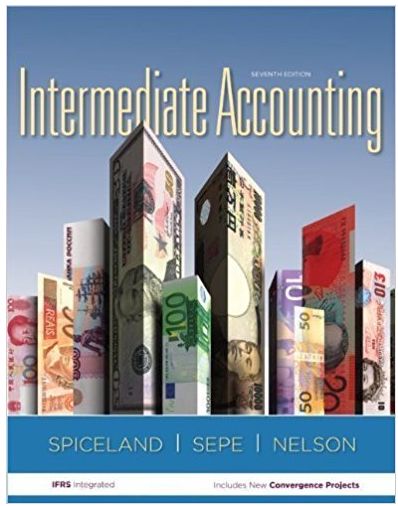IFRS 13, entered into force on January 1, 2013, which defines fair value, establishes a single framework for measuring fair value and also requires disclosures
IFRS 13, entered into force on January 1, 2013, which defines fair value, establishes a single framework for measuring fair value and also requires disclosures on fair value measurement (IFRS). IFRS 13 does not focus when assets, liabilities or an equity instrument are measured at fair value. Instead, the measurement and disclosure requirements apply when other IFRSs allow or require items to be measured at fair value (IFRS). In accordance with this standard, fair value is based on the notion of the exit price and makes use of the fair value hierarchy and this results in a market-based measurement rather than an entity-specific measurement (IFRS). .
The definition of fair value under IFRS 9 is the amount for which assets can be exchanged, or any liability can be settled, between informed and willing parties over the duration of the transaction. According to IFRS 13, fair value is the price that will be received to sell an asset or paid to transfer a liability in an orderly transaction between market participants on the measurement date (Deloitte, 2013, p. 1). . In previous IFRS, companies were not required to update their liabilities at fair value, but in the case of IFRS 13, even the derivative must be disclosed at its market value. In accordance with IFRS 13, own credit risk will not be included in the measurement of the fair value of the liability. IFRS 13 provides guidance for measuring financial and non-financial assets together. IFRS 13 uses IFRS 7 type in the disclosure hierarchy that was not followed in the previous measurement. IFRS 13 clearly distinguishes credit risk as opposed to previous fair value measurement. Additional disclosure requirements are for those in level 3 hierarchies, they must provide quantitative information about the observable inputs that are used in the fair value measurement. A narrative description of the fair value sensitivity that will result in different values should be provided (Deloitte, 2013, pp. 4-6). IFRS 13 clearly distinguishes credit risk as opposed to previous fair value measurement. Additional disclosure requirements are for those in level 3 hierarchies, they must provide quantitative information about the observable inputs that are used in the fair value measurement. A narrative description of the fair value sensitivity that will result in different values should be provided (Deloitte, 2013, pp. 4-6). IFRS 13 clearly distinguishes credit risk as opposed to previous fair value measurement. Additional disclosure requirements are for those in level 3 hierarchies, they must provide quantitative information about the observable inputs that are used in the fair value measurement. A narrative description of the fair value sensitivity that will result in different values should be provided (Deloitte, 2013, pp. 4-6).
Disclosure requirements should be based on active market values, if in case assets or liabilities are identical without market price then similar values (ICAEW) can be used. If in the case of unobservable inputs developed by the entity, then the values are disclosed using the measurement date (IFRS). The challenges are in determining the fair value of the liability that has an associated credit risk. This makes it more difficult to determine the value of a derivative instrument (Deloitte, 2013, pp. 2-3). It is not easy to determine the value of assets using the all-time active market approach for a company. Alternatives to determine fair value may be based on transactions of similar assets or liabilities; the exit price can be determined with the recent sales of another group of pairs (IFRS). There are cases where it is not easy to determine the active market price, you can use the DCF (discounted cash flow method) which is the income approach and also the adjusted net asset method (IFRS.com, 2012, pp. 61 -63).
"Impairment of Assets: The 2008-2009 Recession"
Answer the following:
From the case study, compare the disclosure notes provided at Nestlé, Swatch Group and Royal Bank of Scotland with the disclosure notes from News Corp and CBS Corporation. Explain which disclosure notes are most informative for those interested in evaluating the financial statements.
Contrast the difference between the impairment test for goodwill and the impairment test requirements for other assets. Examine the purpose of the differences identified in the impairment tests of goodwill and other assets.
Step by Step Solution
There are 3 Steps involved in it
Step: 1
Regarding the first question the disclosure notes provided by Nestl Swatch Group and Royal Bank of Scotland appear to be more informative than those p...
See step-by-step solutions with expert insights and AI powered tools for academic success
Step: 2

Step: 3

Ace Your Homework with AI
Get the answers you need in no time with our AI-driven, step-by-step assistance
Get Started


